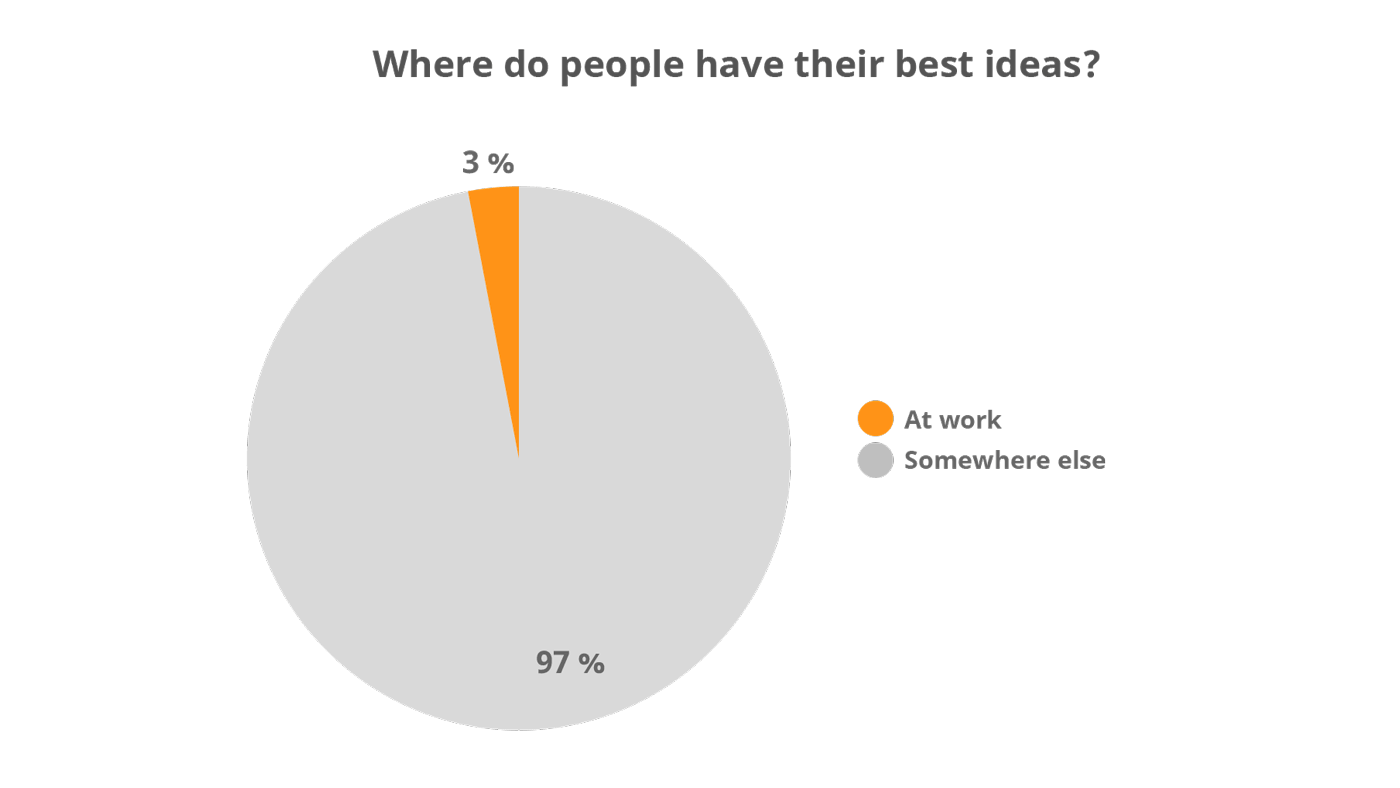Ideation Shouldn't Be Tied to a Time or a Place
We're occasionally asked by clients and prospects to use technical measures to restrict the availability of ideation activities either by time or place.
Almost always these requests, while grounded in theoretically valid concerns, are actually counterproductive for the goals of open ideation, namely creating more and better ideas, as well as a more engaged, transparent and open culture.
In this post, I’ll talk a little bit about our experiences on why ideation shouldn't be tied to a time or a place.
Table of contents

The best ideas are born outside the office
Let’s start off with the elephant in the room. If you’re looking to get more and better ideas, you should obviously be looking to do whatever you can to help people boost their output in this regard.
If I look at my own experience, I usually have my best ideas when I’m taking a shower or exercising and I'm definitely not the only one who seems to have it this way. Neuroscience backs this view too. According to creativity experts, the human brain is at its most creative when it’s:
- High on dopamine
- Relaxed
- Distracted
If you think about your workplace, it’s usually an environment where your state of mind is pretty much the polar opposite of these qualities. That’s why it shouldn’t come as a surprise that a recent study featured in Wired found out that only 3% of people have their best ideas while at work.
Thus, if you prevent people from submitting ideas when and where they occur, you’re bound to lose a very large proportion of the very ideas you’re looking to get in the first place.
Transparency creates accountability
In reality, open ideation is at least as much about creating a culture of openness and transparency as it’s about actually collecting more ideas.
We’ve had a number of occasions where senior executives have voiced their concern about this openness since their employees have had a history of making distasteful jokes and other similarly undesirable actions.
If you have this kind of a history, it’s of course natural to want to prevent this from happening again.
However, transparency almost always keeps people straight in this regard. I mean what could really be more embarrassing than making a fool out of yourself in front of the entire company. In some countries and companies that kind of behavior might even get the person fired.
Transparency thus creates powerful mechanisms for preventing undesirable behavior by making people accountable for their actions. As a result, we still haven't heard of a single such case from any of our customers.
Communication for the rescue
Even if somehow there were issues of people behaving badly, or just not understanding the name of the game, transparency will play to your advantage as these cases are actually powerful learning opportunities for the entire organization.
With transparency, it's easy to come up with a good response that not only solves the issue but capitalizes on this powerful learning opportunity. Just make sure your response:
- Is respectful of the person making the mistake
- Communicates that it's okay to make mistakes... as long as you learn from them!
- Tells that this really is a bidirectional conversation and any and all input from everyone is welcome
- Remind them that you’re really looking to become better together to create a brighter future for everyone
Barriers are inefficient and counterproductive
These kinds of barriers of time and place are usually only effective in making things more difficult for the people that would actually like to participate in the intended way. If there really was an employee that wanted to joke or cause harm, they'd easily have a way to do either when they're at the office, just like a simple fence won't stop anyone who really wants to get to the other side.

Also, with these barriers, you’re also essentially displaying and communicating distrust toward the very people you’re trying to engage, which doesn’t really help in creating a culture where people feel respected and appreciated, again a key for getting people to open up and participate.
Closing words
There are some rare cases where it actually is reasonable to limit ideation due to information security related reasons (we do offer IP-whitelisting for these purposes), but outside these occasions, make sure you’re not creating any unnecessary boundaries for ideation.
Open ideation is essentially a great sandbox for your organization to strive toward a more transparent, open, trusting, and participatory culture. Make sure you take that opportunity and get the most ouf of it.
Interested in Innovation and Leadership?
Subscribe to our blog to get the latest stories on innovation, leadership and culture straight to your inbox.





